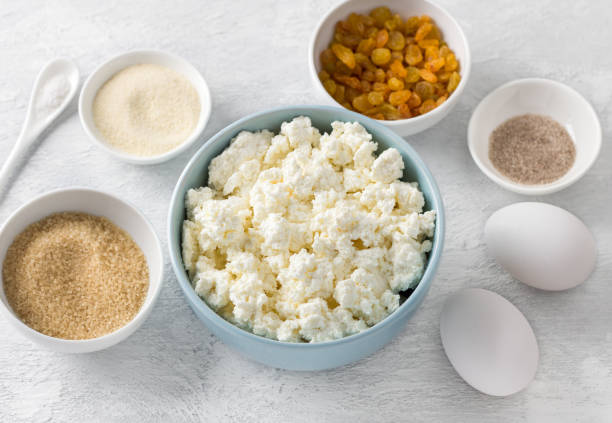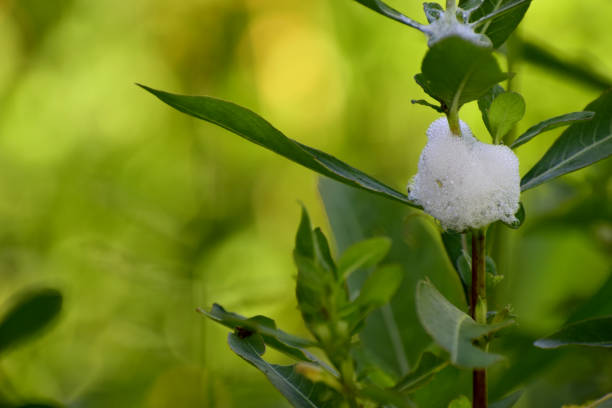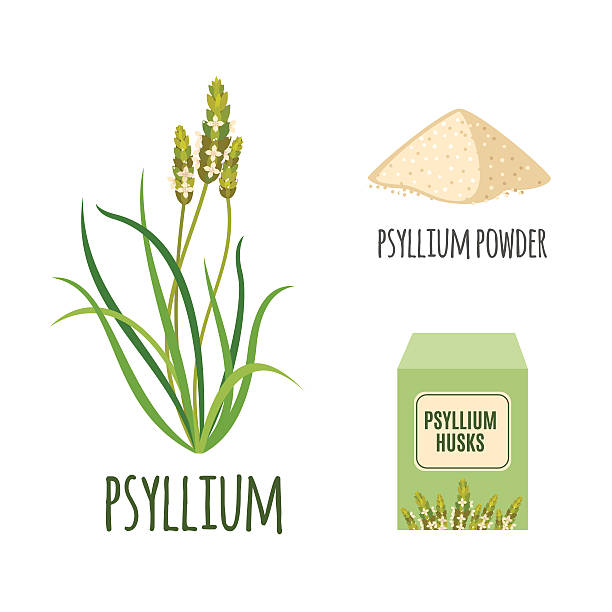
INTRODUCTION
The ketogenic diet, frequently alluded to as the keto diet, has acquired huge prevalence lately because of its true capacity for weight reduction and different medical advantages. This low-carb, high-fat eating regimen confines the admission of starches to instigate a condition of ketosis, where the body consumes fat for fuel rather than glucose. While numerous food sources are plainly beyond reach on the keto diet, the inquiry emerges: Is cornstarch keto-accommodating? In this thorough blog entry, we will investigate the complexities of cornstarch, its nourishing piece, and its reasonableness for those following a ketogenic way of life.
UNDERSTANDING THE KETOGENIC DIET
Prior to digging into the similarity of cornstarch with the ketogenic diet, getting a handle on the basics of this dietary approach is fundamental.
The keto diet rotates around definitely lessening starch admission and expanding the utilization of solid fats. Thusly, it powers the body to move from involving glucose as its essential energy source to using put away fat for energy. This metabolic state, known as ketosis, has been related with different advantages, including weight reduction, further developed glucose control, and improved mental capability.
In any case, sticking to the keto diet requires severe adherence to a particular macronutrient proportion. Commonly, the eating regimen comprises of:
1) LOW CARBS: The keto diet is described by a critical decrease in carb utilization, for the most part to around 5-10% of complete everyday calories. This severe breaking point powers the body to depend on fat for fuel rather than carbs.
2) MODERATE PROTEIN: Protein consumption on the keto diet is moderate, containing around 20-25% of all out everyday calories. It is fundamental to forestall unreasonable protein consumption, as the body can change over abundance protein into glucose, possibly thwarting ketosis.
3) HIGH FAT: Most of calories in the keto diet come from fat, normally around 70-75% of all out day to day calories. This urges the body to consume put away fat for energy, prompting weight reduction.
4) SUPPLEMENT RICH FOOD SOURCES: While sugars are fundamentally confined, the keto diet energizes the utilization of supplement rich food sources like non-dull vegetables, nuts, seeds, and sound fats like avocados and olive oil.
With this understanding in mind, let’s explore cornstarch and whether it aligns with the keto diet’s principles.
CORNSTARCH: A NUTRITIONAL OVERVIEW

Cornstarch is a flexible and broadly utilized kitchen staple that assumes a critical part in cooking and baking. It’s a fine, fine substance produced using corn parts, and its main role is to thicken sauces, soups, flavors, and various recipes. Nonetheless, past its culinary purposes, cornstarch additionally offers a few nourishing perspectives that merit investigating. In this article, we’ll investigate cornstarch’s healthful organization, its likely advantages and disadvantages, and its different applications in the culinary world.
NUTRITIONAL COMPOSITION
To comprehend cornstarch’s dietary benefits, how about we look at its regular structure per 100 grams:
- CALORIES: Cornstarch gives around 381 calories for every 100-gram serving. Calories principally come from sugars, as cornstarch is essentially sans fat and without protein.
- CARBOHYDRATES: Cornstarch is predominantly made out of starches, with roughly 91 grams of carbs per 100 grams. These sugars comprise fundamentally starch, which is a mind-boggling carb comprised of long chains of glucose particles.
- SUGARS: Cornstarch is normally without any trace of sugars, containing no grams of sugar. This absence of sugar makes it a nonpartisan expansion to recipes concerning pleasantness.
- FIBER: Cornstarch, similar to sugar, is extremely low in fiber, containing zero grams. Fiber is a fundamental part of a solid eating regimen that guides in processing and supports stomach well-being. The shortfall of fiber in cornstarch implies it doesn’t add to your day-to-day fiber admission.
- PROTEIN: Cornstarch contains negligible protein, with just the following sums, regularly under 0.5 grams per 100 grams.
- FAT: Cornstarch is basically without fat, containing just the following measures of fat (under 0.1 grams per 100 grams). This makes it a reasonable decision for recipes where you need to try not to add additional fat.
CORNSTARCH IN COOKING AND BAKING
One of the essential purposes of cornstarch is as a thickening specialist in different culinary applications. Its capacity to thicken fluids is because of its starch content, which ingests water and expands while warmed, making a thick and smooth consistency. Here are a few normal purposes of cornstarch in cooking and baking:
- SAUCES AND FLAVORS: Cornstarch is regularly used to thicken sauces and flavors, giving a lustrous and plush surface. It’s a favored decision in numerous Asian sautéed food dishes for its capacity to make a sparkly coating.
- DESSERTS: Cornstarch is a critical fix in making velvety puddings, custards, and pie fillings. Its thickening properties assist with accomplishing the ideal consistency in these sweet treats.
- BAKING: In baking, cornstarch is at times added to cake and treat recipes to make a lighter, more delicate surface. It can likewise be utilized as an enemy of hardening specialists to forestall bunching in powdered sugar.
- COVERING FOR BROILING: Cornstarch is utilized as a covering for seared food varieties like chicken and tempura. It makes a fresh and crunchy outside when seared.
- WITHOUT GLUTEN BAKING: Cornstarch is normally without gluten, making it a reasonable fix in without-gluten baking recipes. It can assist with imitating the surface of gluten in specific prepared merchandise.
ADVANTAGES OF CORNSTARCH
While cornstarch is essentially known for its culinary applications, it offers a few expected benefits:
- GLUTEN-FREE: Cornstarch is normally without gluten, settling on it a protected decision for people with celiac sickness or gluten responsiveness. It very well may be utilized as a substitute for wheat flour in sans gluten recipes.
- NONPARTISAN FLAVOR: Cornstarch has a nonpartisan taste, and that implies it will not essentially modify the kind of your dishes. This makes it adaptable for both sweet and appetizing recipes.
- THICKENING SPECIALIST: Its superb thickening properties make cornstarch an important apparatus in the kitchen for accomplishing the ideal consistency in sauces, soups, and treats.
- SURFACE IMPROVEMENT: In baking, cornstarch can work on the surface of cakes and treats, bringing about a milder, more fragile morsel.
DISADVANTAGES OF CORNSTARCH
Notwithstanding its adaptability, there are a few downsides related with cornstarch:
- HIGH IN SUGARS: Cornstarch is essentially made out of starches, and a 100-gram serving contains a lot of carbs (roughly 91 grams). This can be a worry for people on low-carb or ketogenic eats less.
- ABSENCE OF SUPPLEMENTS: Cornstarch is somewhat without any trace of fundamental supplements like nutrients and minerals. It gives calories yet comes up short on healthy benefit found in entire grains or other starch sources.
- INFLUENCE ON GLUCOSE: Because of its high starch content, cornstarch can prompt quick spikes in glucose levels when consumed in huge amounts. This can be hazardous for people with diabetes or those hoping to deal with their glucose.
CARBOHYDRATES AND THE KETO DIET
Carbohydrates assume a vital part in the ketogenic diet, frequently alluded to as the keto diet. Understanding how carbs are overseen in this dietary methodology is urgent for anybody hoping to receive its rewards. In this article, we’ll investigate the meaning of carbs in the keto diet, why they are confined, and the way in which this limitation helps the body accomplish and keep a condition of ketosis.
WHY CARBOHYDRATES ARE RESTRICTED IN KETO
The essential justification for limiting carbs in the keto diet is to prompt a metabolic state called ketosis. Ketosis is a characteristic metabolic state where the body changes from utilizing glucose (sugar) as its essential wellspring of energy to utilizing fat, both dietary fat and put away muscle to fat ratio.
At the point when starches are consumed, they are separated into glucose and delivered into the circulatory system. In light of rising glucose levels, the body produces insulin to assist with moving glucose into cells for energy or capacity. Be that as it may, insulin additionally flags the body to store an overabundance of glucose as glycogen in the liver and muscles. When glycogen stores are full, any abundance of glucose is changed over into fat and put away in fat tissue.
Interestingly, when carb admission is seriously confined, the body’s glycogen stores become drained. Accordingly, glucose levels drop, and insulin creation diminishes. This signals the body to begin separating fat stores into particles called ketones, which can be utilized as an elective fuel source. Ketones are delivered in the liver from unsaturated fats and are then moved to cells all through the body for energy.
HOW CARBOHYDRATE RESTRICTION LEADS TO KETOSIS
To enter and keep a condition of ketosis, sugar consumption should be restricted to a particular reach, normally 20-50 grams of net carbs each day. Net carbs are determined by deducting fiber from the all-out starch content since fiber doesn’t altogether influence glucose levels.
As carb consumption diminishes, the body’s insulin creation diminishes, prompting a decrease in glucose levels. This signals the body to change from involving glucose for energy to depending on putting away fat. The liver beginnings delivering ketones, which become the body’s essential wellspring of fuel.
IMPACT ON BLOOD SUGAR
One more significant variable to consider is the impact of cornstarch on glucose levels. Food sources with a high glycemic record (GI) can cause quick spikes in glucose, which is something keto calorie counters effectively attempt to stay away from.
Cornstarch has an exceptionally high GI, frequently surpassing even that of table sugar. When ingested, it can prompt a quick expansion in glucose levels, possibly disturbing ketosis and the ideal metabolic state. This is especially risky for people with insulin opposition or diabetes, as it can intensify their condition.
THE HIDDEN CARBS IN RECIPES
Cornstarch frequently slips into recipes as a thickening specialist for soups, sauces, and pastries. Many individuals may not understand that an apparently limited quantity of cornstarch can add a significant number of carbs to a dish. This can be particularly dangerous for those stringently sticking to a ketogenic diet.
ALTERNATIVES TO CORNSTARCH FOR KETO COOKING
The ketogenic diet, with its emphasis on low carb admission, requires clever fixes for thickening sauces, soups, and different dishes without depending on cornstarch, which is high in carbs. Luckily, there are a few keto-accommodating options that can give the ideal surface and consistency while keeping carb counts low. In this article, we’ll investigate these options in contrast to cornstarch for keto cooking.
1) XANTHAN GUM:

What’s going on here? Thickener is a typical keto-accommodating thickening specialist. It is a solvent fiber got from the maturation of sugar by the microbes Xanthomonas campestris.
How to utilize it? Thickener is extraordinarily powerful, so just a limited quantity is required. Begin with a little squeeze and step by step add more on a case by case basis while blending to abstain from clustering. It’s a magnificent decision for thickening sauces, flavors, and soups.
2) GUAR GUM:

What’s going on here? Like thickener, guar gum is another keto-accommodating thickener produced using guar beans. It has a nonpartisan taste and is many times utilized as a stabilizer and thickening specialist.
How to utilize it? Like thickener, use guar gum sparingly. It functions admirably in both hot and cold fluids and can be utilized in various recipes.
3) COCONUT FLOUR:

What’s going on here? Coconut flour is a keto-accommodating flour elective produced using ground dried coconut meat. It is normally low in starches and high in fiber.
How to utilize it? To utilize coconut flour as a thickener, blend it in with a limited quantity of water to make a glue prior to adding it to your dish. It’s reasonable for keto baking and can likewise thicken soups and sauces.
4) ALMOND FLOUR:

What’s going on here? Almond flour is produced using finely ground whitened almonds. It is low in carbs and wealthy in solid fats and protein.
How to utilize it? Almond flour can be utilized as a thickening specialist in different keto recipes, including sauces and flavors. It can likewise add a nutty flavor and a touch of surface to dishes.
5) PSYLLIUM HUSK POWDER:

What’s going on here? Psyllium husk is a plant-based fiber got from the seeds of the Plantago ovata plant. Psyllium husk powder is a concentrated type of this fiber.
How to utilize it? Psyllium husk powder is fantastic for thickening soups and stews. It has the additional advantage of giving dietary fiber, which can be gainful for stomach-related well-being on a keto diet.
6) CHIA SEEDS:

What are they? Chia seeds are small seeds loaded with fiber, sound fats, and protein. At the point when fluid, they foster a gel-like consistency.
How to utilize them? To thicken recipes, grind chia seeds into a fine powder and blend them in with water to make a gel. This gel can be added to soups, and sauces, or even utilized as an egg substitute in keto baking.
7) GELATIN:

What’s going on here? Gelatin is a protein derived from collagen, ordinarily obtained from creature bones and connective tissues.
How to utilize it? Gelatin can be utilized to thicken fluids by dissolving it in warm water and afterward integrating it into your recipe. It’s great for keto-accommodating sweets like panna cotta or cheesecake.
8) ARROWROOT POWDER (WITH SOME RESTRAINT):

What’s going on here? Arrowroot powder is a starch obtained from the rhizomes of the arrowroot plant. It is higher in starches than a few different other options yet lower than cornstarch.
How to utilize it? While not as carb-accommodating as a few different choices, arrowroot powder can in any case be utilized with some restraint to thicken keto-accommodating recipes. It functions admirably in flavors and sauces however ought to be utilized sparingly.
CONCLUSION
In summary, cornstarch isn’t keto-accommodating because of its very high carb content and potential to spike glucose levels. It goes against the center standards of the ketogenic diet, which stresses low-carb, high-fat admission to incite and keep up with ketosis.
For people following a keto way of life, it’s prudent to keep away from cornstarch and investigate elective low-carb thickeners like thickener, guar gum, coconut flour, almond flour, or psyllium husk powder. These options permit you to partake in the thickening properties of cornstarch without undermining your ketosis or by and large well-being objectives.
Likewise, with any dietary decision, it’s fundamental to talk with a medical care proficient or enrolled dietitian prior to rolling out huge improvements to your eating regimen, particularly in the event that you have explicit well-being concerns or conditions. They can give customized direction and suggestions to assist you with accomplishing your nourishing objectives while remaining within the boundaries of the ketogenic diet.
FAQs
Simple to-get to options are wheat flour, arrowroot flour, and rice flour. These are great options in contrast to cornstarch since they are more nutritious and contain less sugars and calories. Xanthan and guar gum are a lot more grounded thickeners than cornstarch, however they can be more diligently to get and utilize.
Cornstarch is an unadulterated carb, yet flour has more supplements. Cornstarch is a typical fixing in a wide assortment of food varieties and refreshments.
Little servings of cornstarch are not awful for you. Be that as it may, eating a lot of cornstarch or consuming it crude isn’t suggested. Cornstarch will in general be high in carbs and low in supplements. This gives it a high glycemic file.
